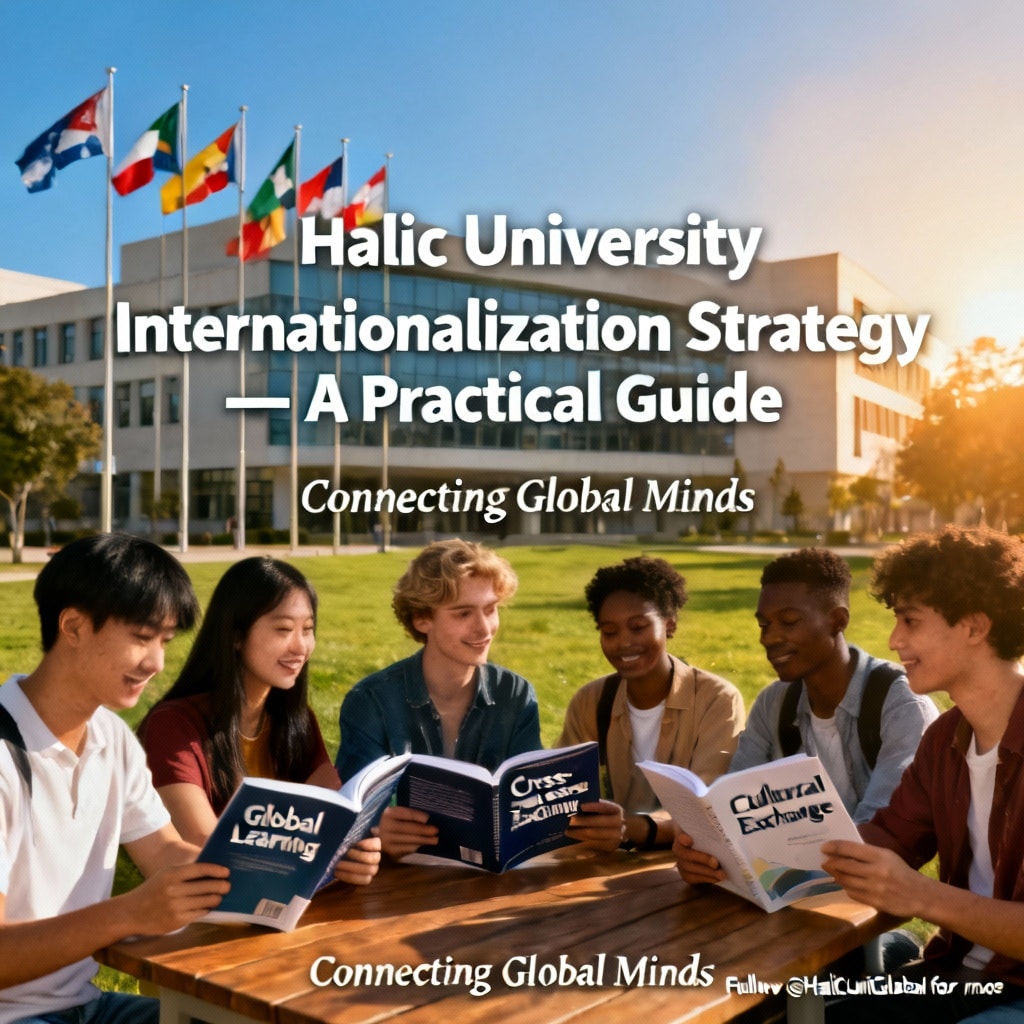Internationalization Strategy of Haliç University — A Practical Guide for Recruiters, Admissions Teams, and Education Partners
Operational Playbook
Technology and Automation — Scaling International Recruitment
Measuring Success — KPIs and Impact Metrics
Case Integration — Working with Turkish University Ecosystems
Conclusion
Internationalization Strategy of Haliç University — Strategic Pillars and Implementation
The Internationalization strategy of Haliç University is a model for institutions in Turkiye and beyond that seek to expand global engagement, increase international student mobility, and build sustained cross‑border academic collaboration. For international student recruiters, university admissions teams, HR and marketing professionals, and placement agencies, understanding Haliç University’s coordinated approach provides actionable lessons for partnership development, recruitment automation, and student support models.
1. Robust Exchange Programs — Erasmus+ and Global Bilateral Agreements
- Scope: Haliç maintains an extensive Erasmus+ network with over 160 partner institutions across 27 European countries, together with more than 50 bilateral exchange agreements worldwide covering North/South America, the Middle East, Asia, Africa, and Central Asia.
- Practice: Students can undertake one- or two‑semester mobility while transferring credits back to Haliç, enabling academic continuity and international exposure without delaying graduation.
- Value for recruiters: Exchange programs create strong inbound pipelines and offer conversion points.
- Institutional example: Haliç’s exchange framework complements collaborative initiatives at other Turkish institutions such as Medipol University and Uskudar University.
2. Strategic International Partnerships and “Global Wealth”
- Objective: Build a campus “global wealth” — a diversity of pedagogical models, visiting faculty, research collaborations, and joint programs.
- Implementation steps: Identify target regions and institutions with complementary strengths.
- Partnership mapping: Short-term focus on quality agreements that deliver student exchanges and joint research.
- Practical tie-ins: Collaborating with institutions such as Istinye University can be beneficial.
3. Targeted International Marketing and Recruitment Automation
- Shift in emphasis: Haliç has modernized its recruitment model by streamlining admissions and adopting digital marketing automation.
- Outcomes: Faster response times and improved conversion rates from inquiry to application.
- Actionable tactics for admissions teams: Use localized messaging and automated follow-ups combined with human interaction.
- Relevant partner models: Study in Turkiye’s recruitment services can complement Haliç’s automation.
4. Diverse Student Population and Intercultural Campus Life
- Current status: Haliç hosts hundreds of international students from more than 70 countries, contributing to a multicultural campus.
- Benefits: Enhanced classroom learning and peer networks that aid retention.
- Recruitment implication: Highlighting student diversity in marketing materials.
5. Comprehensive International Student Support Infrastructure
- Core elements: Dedicated International Office services supporting students with applications, orientation, visa advice, housing guidance, and academic adaptation.
- Best practices: Peer-mentorship programs and clear guides on career pathways for international alumni.
- Why this matters: Well-documented support pathways are crucial for decision-making.
6. Official Recognition and Career Opportunities
- Recognition: Degrees from Haliç University carry recognition in multiple countries.
- Employer engagement: Active career services increase graduate outcomes.
7. Innovative and Multidisciplinary Education Model
- Focus: Haliç emphasizes research-oriented and practical education.
- Collaboration opportunities: Haliç is an attractive partner for health and social sciences collaborations with institutions such as Ozyegin University.
Operational Playbook — How Recruiters, Admissions Teams, and Agencies Can Work with Haliç University
Phase 1 — Partnership Development and Mapping
- Identify priority programs: Focus on disciplines with strong international appeal.
- Map mutual value and negotiate clear MoUs.
Phase 2 — Joint Recruitment Campaigns
- Co-branded microsites and local-language landing pages.
- Shared digital campaigns to nurture leads.
Phase 3 — Admissions Process and Conversion
- Streamline documentation and offer conditional admissions where feasible.
- Provide a clear recognition brief for prospective students.
Phase 4 — Student Arrival, Retention, and Career Follow-Up
- Ensure co-created orientation checklists.
- Design retention interventions.
- Track graduate outcomes and publish placement reports.
Technology and Automation — Scaling International Recruitment
Key Automation Capabilities to Prioritize
- CRM with lead scoring and source tracking.
- Automated nurture sequences with tailored content.
- Analytics dashboards to monitor campaign ROI.
How Study in Turkiye Supports Automation
- Provides market insights and CRM integration support.
- Helps set up regional campaigns and localize messaging.
Measuring Success — KPIs and Impact Metrics
- Monitor number and diversity of mobilities.
- Track conversion rates from inquiry to application.
- Retention rates of international students.
- Graduate employability outcomes.
Case Integration — Working with Turkish University Ecosystems
Consider how Haliç fits within broader Turkiye-based collaborations, such as health and clinical internships with Istinye University and Medipol University.
Conclusion — Why the Internationalization Strategy of Haliç University Matters to You
Haliç University’s internationalization strategy demonstrates how purposeful partnerships and comprehensive support can enhance global engagement and student outcomes.
Take the Next Step with Study in Turkiye
If you’re looking to build or scale international recruitment partnerships, Study in Turkiye can help with market research, campaign management, and agent network development.

